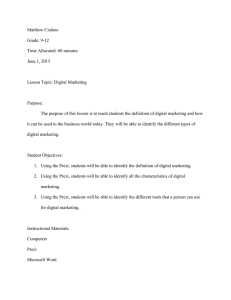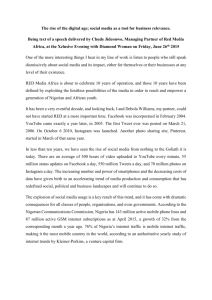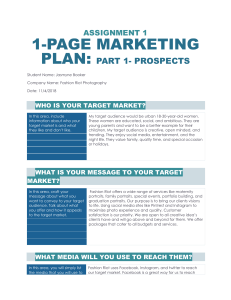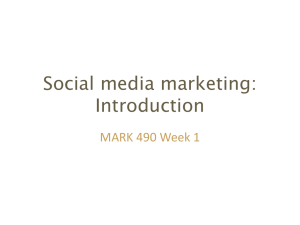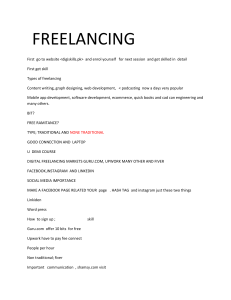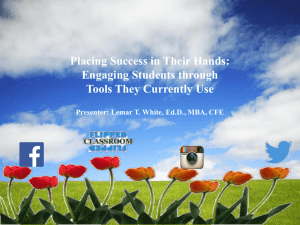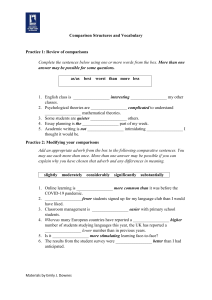Mass Media and Social Networks
advertisement
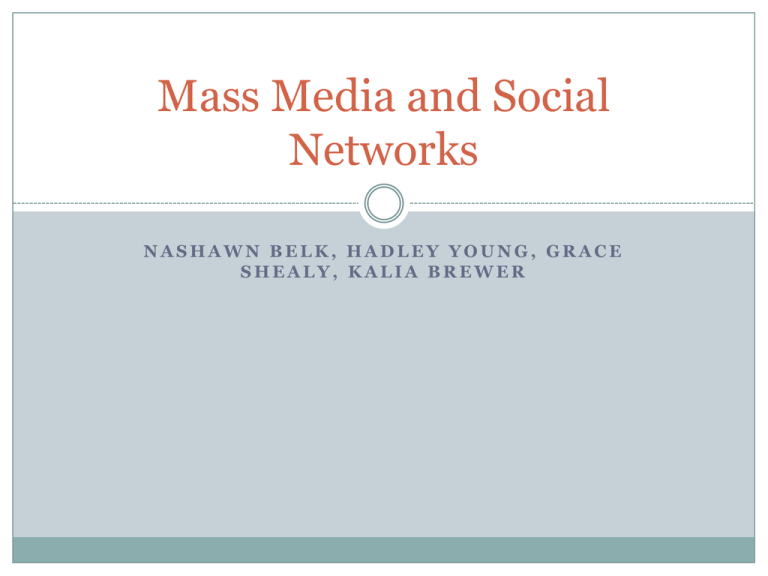
Mass Media and Social Networks NASHAWN BELK, HADLEY YOUNG, GRACE SHEALY, KALIA BREWER Definitions Mass Media: A means of public communication reaching a large audience. Social Networks: An online community of people with a common interest who use a Web site or other technologies to communicate with each other and share information. Ex: Facebook, Twitter, Instagram Facts about Facebook 1 In every 13 people on Earth is on Facebook. In 20 minuets, 1,851,000 status updates are sent. People spend over 700 billion minuets per minuet on Facebook. 48% of young Americans say they find out about the news through Facebook. 48% of 18 to 34 years olds check Facebook right when they wake up. There are more than 70 translations available. Twitter More than 350 billion tweets has gone out world wide since March 2006. As of June there are 232 million active users Twitter is blocked in China and yet still has some 35 million users in the country President Barack Obama has the 4th most popular twitter account Around 3/4th of twitter users access it on a mobile device. The payroll exceeds 2300 people. Instagram There are 150 million active Instagram users There have been 16 billion photos shared as of october 22 2013 Instagram launch date is on october 2010 The average user on instagram spends about 251 minutes a month on the site Facebook paid 715 million dollars for Instagram, it only had 13 employees at the time There 8500 likes on instagram per second Institutionalization of Mass Media Mass Media: are instruments of communication that reach large audiences with no personal contact between those sending the information and those receiving it. Mass media started with the invention of writing and paper and then was transformed when the printing press was invented by Johannes Gutenberg. The first book printed was the Gutenberg Bible. The digital computer completely transformed how peopled accessed and stored information. Mass Media in the United States Information society: what the US is, it’s a community in which the exchange of information is the main social and economic activity. 4 groups of mass media: print, audio, visual, and online. Print media: Includes newspapers, magazines, and books. Approximately 56 million newspapers are printed in a day and 57% of adults read the newspaper everyday. Print media has a substantial audience but the number has declined in recent years. And those who did read the newspaper have spent less time reading. Mass Media in the United States Audio media: The radio and sound recordings are the two major categories of audio media. Sound recordings is one of the largest industries in the US. This includes CD’s, cassette tapes, vinyl records, and music videos. Inventions like MP3’s and iPods have grown in popularity over the years. 99% of homes in the United States have some format of a radio. Commercials are broadcasted over the radio to their audiences. Mass Media in the United States Visual Media: Movies, television, videocassettes and DVD’s make up visual media. Television reaches the largest audience in the US. 98% of Americans have a TV in their house. Major broadcasting networks and cable channels dominate TV’s in the US. Between 400 and 500 movies are released a year and cover several genres (action, comedy, horror, romance, science fiction, and westerns), in 2000 the box office made more than $7 billion. Mass Media in the United States Online media: The internet has become increasingly popular, offering service including email, social networking, and online shopping. Media convergence: the integration of different media technologies. An example of this is how print media and online media have merged. Newspapers and magazines are now available online, and many people have subscribed to these instead of the print version. Functionalist Perspective Believe that mass media perform functions that support the stability and smooth operation of society These functions include keeping track of what is happening in the world, interpreting information, transmitting cultural values, and entertaining people Believe that to be a productive member of society, people need to know what is going on around them Conflict Perspective Believe that the purpose of social institutions is to maintain the present social order Some believe that media can decide what information is provided and how it is presented Others believe that mass media in the United States encourage the acceptance of the power structure by encouraging a culture of consumerism- if people are busy increasing their collection of material possessions, they have no time to think about society’s inequalities Interactionist Perspective Do not study mass media nearly as much because they focus on individuals Study the media on a micro level to see how it shaped every day behavior Might study the effect of watching a violent movie on a couple’s frequency of physical violence towards eachother Works Cited http://articles.economictimes.indiatimes.com/2013- 11-03/news/43628472_1_jack-dorsey-twitteraccounts-twitter-users http://www.jeffbullas.com/2011/04/28/50fascinating-facebook-facts-and-figures/ http://expandedramblings.com/index.php/importa nt-instagram-stats/
